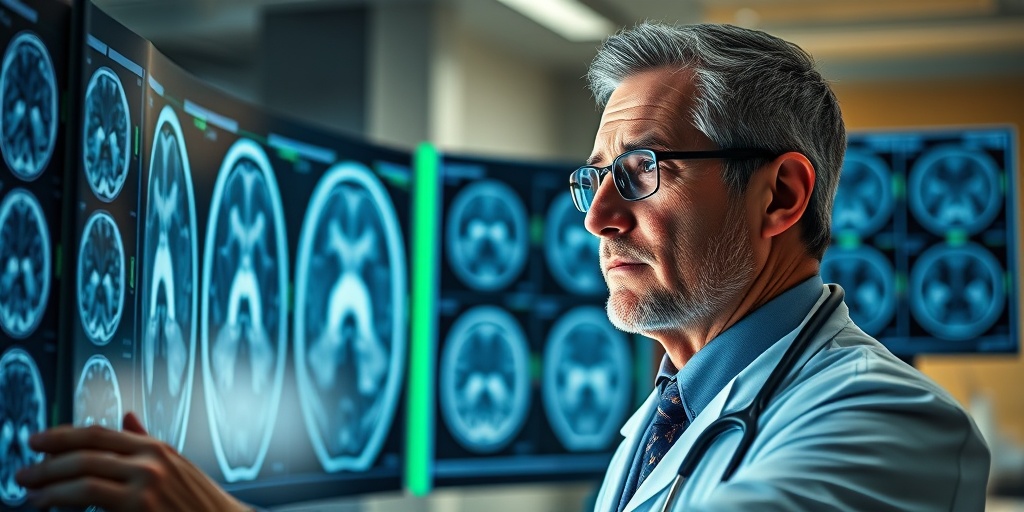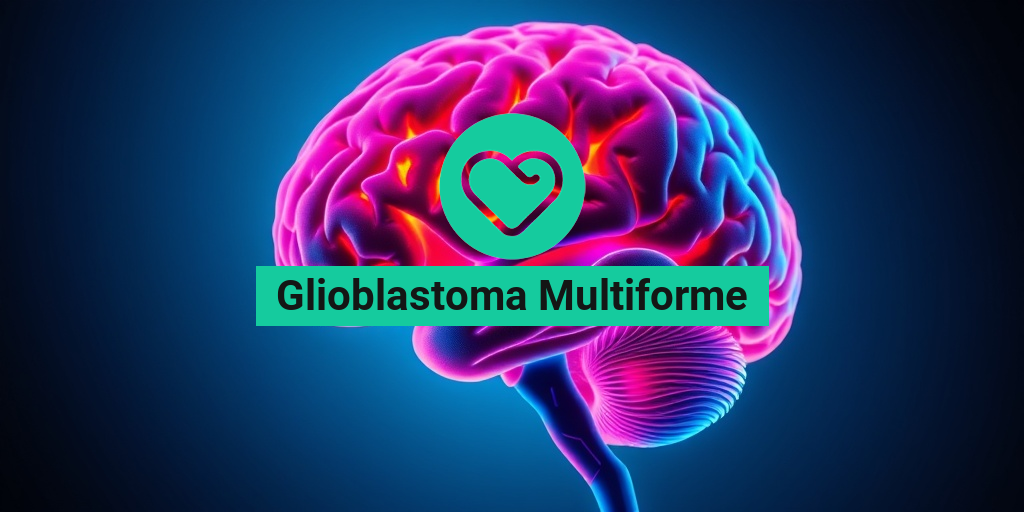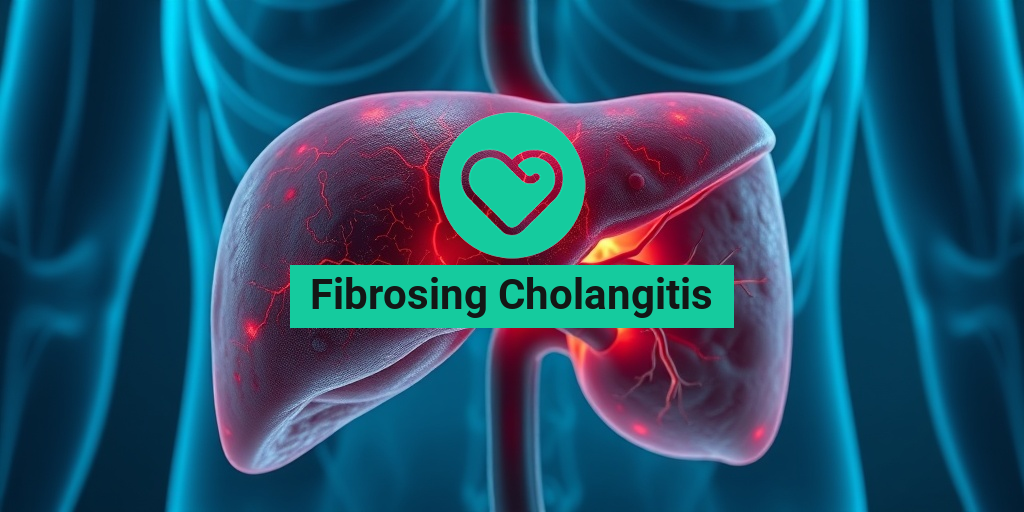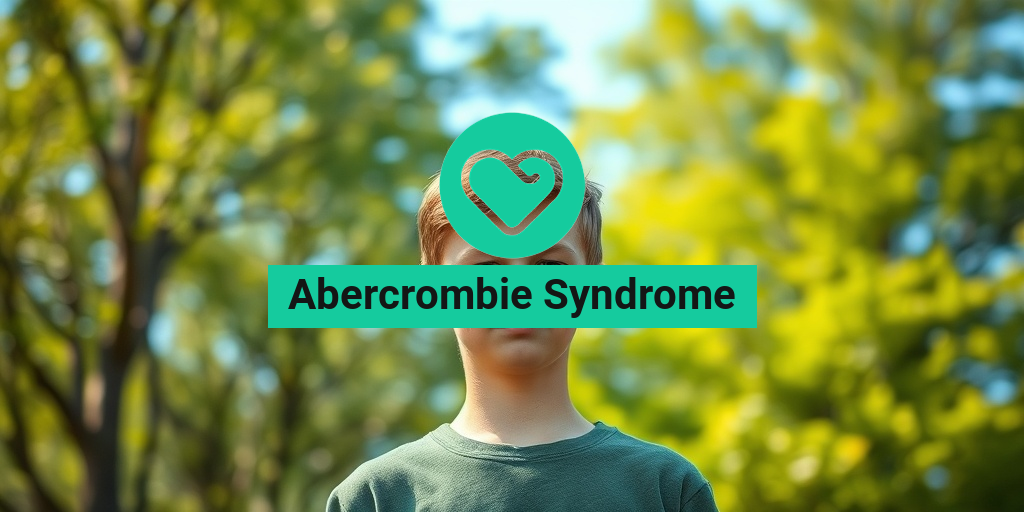What Is Glioblastoma Multiforme?
Glioblastoma multiforme (GBM) is a highly aggressive type of brain cancer that originates from glial cells, which are supportive cells in the brain. It is classified as a grade 4 tumor, indicating its rapid growth and tendency to invade surrounding brain tissue. GBM is known for its complex nature, making it one of the most challenging cancers to treat effectively.
Understanding the Biology of Glioblastoma Multiforme
GBM arises from astrocytes, a type of glial cell, and is characterized by its heterogeneous composition. This means that the tumor can contain a variety of cell types, which contributes to its unpredictable behavior. The tumor’s cells often exhibit genetic mutations that promote uncontrolled growth, making early detection and treatment crucial.
Incidence and Risk Factors
Glioblastoma multiforme is relatively rare, accounting for about 15% of all brain tumors and approximately 50% of all malignant brain tumors. It primarily affects adults, with a higher incidence in individuals aged 45 to 70. While the exact cause of GBM remains unclear, several risk factors have been identified, including:
- Age: Older adults are at a higher risk.
- Gender: Males are more likely to develop GBM than females.
- Genetic predisposition: Certain genetic syndromes may increase risk.
- Exposure to ionizing radiation: Previous radiation therapy to the head can elevate risk.
Glioblastoma Symptoms
Recognizing the symptoms of glioblastoma multiforme is essential for early diagnosis and treatment. Symptoms can vary widely depending on the tumor’s location and size, but some common signs include:
Neurological Symptoms
As GBM grows, it can exert pressure on surrounding brain structures, leading to various neurological symptoms. These may include:
- Headaches: Persistent or worsening headaches that may be more severe in the morning.
- Seizures: New-onset seizures can occur in individuals with no prior history.
- Cognitive changes: Memory problems, confusion, or difficulty concentrating.
- Personality changes: Alterations in mood or behavior, including increased irritability or depression.
Physical Symptoms
In addition to neurological symptoms, patients may experience physical manifestations of the disease, such as:
- Nausea and vomiting: Often due to increased intracranial pressure.
- Weakness or numbness: Particularly on one side of the body, depending on the tumor’s location.
- Vision problems: Blurred or double vision, or loss of peripheral vision.
When to Seek Medical Attention
If you or someone you know is experiencing any combination of these symptoms, it is crucial to seek medical attention promptly. Early diagnosis can significantly impact treatment options and outcomes. Healthcare professionals may use imaging techniques, such as MRI or CT scans, to evaluate the brain and confirm the presence of glioblastoma multiforme.
For those seeking more information about glioblastoma multiforme, including treatment options and support resources, Yesil Health AI (yesilhealth.com) offers evidence-based health answers that can guide you through this challenging journey.
Conclusion
Glioblastoma multiforme is a formidable opponent in the realm of brain cancers, but understanding its nature and symptoms can empower patients and their families. By staying informed and vigilant, individuals can take proactive steps toward diagnosis and treatment, ultimately improving their chances of a better outcome. Remember, if you notice any concerning symptoms, don’t hesitate to consult a healthcare professional. Your health is worth it! 💪🧠

Glioblastoma Causes and Risk Factors
Glioblastoma multiforme (GBM) is one of the most aggressive forms of brain cancer, characterized by rapid growth and a poor prognosis. Understanding the causes and risk factors associated with glioblastoma is crucial for early detection and prevention strategies. While the exact cause of GBM remains largely unknown, several factors have been identified that may increase the likelihood of developing this formidable disease.
Genetic Factors
Genetic predisposition plays a significant role in the development of glioblastoma. Certain inherited conditions, such as:
- Neurofibromatosis type 1 (NF1)
- Li-Fraumeni syndrome
- Tuberous sclerosis
Individuals with these syndromes have a higher risk of developing brain tumors, including glioblastoma. Additionally, mutations in specific genes, such as the TP53 and EGFR genes, have been linked to the disease.
Environmental Factors
Exposure to certain environmental factors may also contribute to the risk of developing glioblastoma. Some of these factors include:
- Ionizing radiation: Previous exposure to radiation therapy, particularly to the head, is a well-established risk factor.
- Chemical exposure: Prolonged exposure to certain chemicals, such as pesticides and industrial solvents, has been suggested as a potential risk factor.
However, the evidence linking these environmental factors to glioblastoma is still inconclusive and requires further research.
Age and Gender
Age is another significant risk factor for glioblastoma. The incidence of this type of brain cancer increases with age, with most cases diagnosed in individuals aged 45 to 70 years. Additionally, glioblastoma is more common in men than in women, although the reasons for this disparity are not fully understood.
Other Potential Risk Factors
While the following factors are still under investigation, some studies suggest they may be associated with an increased risk of glioblastoma:
- Immune system disorders: Individuals with compromised immune systems may have a higher risk of developing various cancers, including glioblastoma.
- Family history: A family history of brain tumors may indicate a genetic predisposition to glioblastoma.
It’s essential to note that having one or more of these risk factors does not guarantee the development of glioblastoma, and many individuals with the disease may not have any identifiable risk factors.
Glioblastoma Diagnosis
Diagnosing glioblastoma multiforme involves a combination of clinical evaluation, imaging studies, and histopathological examination. Early and accurate diagnosis is vital for effective treatment and management of the disease.
Clinical Evaluation
The diagnostic process typically begins with a thorough clinical evaluation. Physicians will assess the patient’s medical history and conduct a neurological examination to identify any symptoms that may indicate brain dysfunction. Common symptoms of glioblastoma include:
- Headaches
- Seizures
- Changes in vision or speech
- Weakness or numbness in limbs
These symptoms can vary depending on the tumor’s location in the brain.
Imaging Studies
Once glioblastoma is suspected, imaging studies are conducted to visualize the brain and identify any abnormal growths. The most common imaging techniques include:
- Magnetic Resonance Imaging (MRI): This is the preferred method for diagnosing glioblastoma, as it provides detailed images of brain structures and can help determine the tumor’s size and location.
- Computed Tomography (CT) Scan: A CT scan may also be used, particularly in emergency situations, to quickly assess the brain for any abnormalities.
Histopathological Examination
To confirm the diagnosis of glioblastoma, a biopsy is often performed. During this procedure, a small sample of the tumor is removed and examined under a microscope by a pathologist. This histopathological examination helps determine the tumor’s grade and type, which is crucial for planning treatment.
In summary, the diagnosis of glioblastoma multiforme involves a comprehensive approach that includes clinical evaluation, imaging studies, and histopathological examination. Understanding the causes and risk factors associated with this aggressive brain tumor can aid in early detection and potentially improve outcomes for those affected. 🧠✨

Glioblastoma Treatment Options
When it comes to glioblastoma multiforme, a highly aggressive brain tumor, understanding the treatment options available is crucial for patients and their families. The treatment plan often depends on various factors, including the tumor’s location, size, and the patient’s overall health. Here, we’ll explore the most common treatment modalities for glioblastoma.
Surgery
Surgery is typically the first line of treatment for glioblastoma multiforme. The primary goal is to remove as much of the tumor as possible, which can help alleviate symptoms and improve the effectiveness of subsequent treatments. However, complete removal is often challenging due to the tumor’s infiltrative nature.
- Craniotomy: This is the most common surgical procedure where a portion of the skull is removed to access the brain. Surgeons aim to excise the tumor while preserving healthy brain tissue.
- Biopsy: In cases where the tumor is in a critical area of the brain, a biopsy may be performed to obtain tissue samples for diagnosis without extensive removal.
Radiation Therapy
After surgery, radiation therapy is often recommended to target any remaining cancer cells. This treatment uses high-energy rays to kill cancer cells and shrink tumors. There are two main types of radiation therapy used for glioblastoma:
- External Beam Radiation Therapy (EBRT): This is the most common form, where a machine directs radiation beams at the tumor from outside the body.
- Stereotactic Radiosurgery: This is a non-invasive procedure that delivers a high dose of radiation precisely to the tumor, minimizing damage to surrounding healthy tissue.
Chemotherapy
Chemotherapy is often used in conjunction with surgery and radiation. The most commonly prescribed chemotherapy drug for glioblastoma multiforme is temozolomide. This oral medication works by interfering with the cancer cell’s ability to divide and grow.
Patients may receive chemotherapy during and after radiation therapy, which can help improve survival rates. However, it’s essential to discuss potential side effects, such as nausea and fatigue, with healthcare providers.
Targeted Therapy and Immunotherapy
Recent advancements in cancer treatment have led to the development of targeted therapies and immunotherapies. These treatments aim to specifically attack cancer cells while sparing normal cells.
- Targeted Therapy: Drugs like bevacizumab (Avastin) target the blood vessels that supply the tumor, effectively starving it of nutrients.
- Immunotherapy: This approach harnesses the body’s immune system to fight cancer. Clinical trials are ongoing to evaluate the effectiveness of various immunotherapeutic agents for glioblastoma.
Glioblastoma Prognosis
The prognosis for patients diagnosed with glioblastoma multiforme can vary significantly based on several factors, including age, overall health, and the tumor’s genetic characteristics. Understanding the prognosis can help patients and families make informed decisions about treatment options.
Survival Rates
Glioblastoma is classified as a Grade 4 tumor, which is the most aggressive type of brain cancer. The average survival rate for patients with glioblastoma is approximately 15 months after diagnosis, with only about 5% of patients
Factors Influencing Prognosis
Several factors can influence the prognosis of glioblastoma multiforme:
- Age: Younger patients tend to have better outcomes compared to older adults.
- Extent of Tumor Removal: Patients who undergo complete surgical resection often have improved survival rates.
- Genetic Markers: Certain genetic mutations, such as MGMT promoter methylation, can indicate a better response to treatment and improved prognosis.
Quality of Life Considerations
While survival rates are a critical aspect of prognosis, it’s also essential to consider the quality of life for patients undergoing treatment. Many patients experience symptoms such as headaches, seizures, and cognitive changes, which can impact daily living. Supportive care, including rehabilitation and palliative care, plays a vital role in enhancing the quality of life for glioblastoma patients.
In conclusion, glioblastoma multiforme presents significant challenges in treatment and prognosis. However, ongoing research and advancements in medical science continue to provide hope for improved outcomes and quality of life for those affected by this aggressive cancer. 🌟

Glioblastoma Research and Advances
Glioblastoma Multiforme (GBM) is one of the most aggressive forms of brain cancer, characterized by rapid growth and a poor prognosis. However, ongoing research is paving the way for new treatments and a better understanding of this complex disease. In this section, we will explore the latest advancements in glioblastoma research, focusing on innovative therapies, clinical trials, and emerging technologies.
Innovative Therapies
Recent studies have highlighted several innovative therapies that show promise in treating glioblastoma multiforme:
- Immunotherapy: This approach harnesses the body’s immune system to fight cancer cells. Treatments like checkpoint inhibitors and CAR T-cell therapy are being investigated for their effectiveness against GBM.
- Targeted Therapy: Researchers are exploring drugs that specifically target genetic mutations associated with glioblastoma. For instance, therapies targeting the EGFR (epidermal growth factor receptor) mutation are currently under study.
- Gene Therapy: This cutting-edge technique involves modifying genes within cancer cells to make them more susceptible to treatment. Early trials have shown encouraging results.
Clinical Trials
Clinical trials are crucial for advancing glioblastoma treatment. They provide patients access to new therapies that are not yet widely available. Here are some key points about ongoing trials:
- Phases of Trials: Clinical trials are conducted in phases, with Phase I focusing on safety, Phase II on efficacy, and Phase III comparing new treatments to standard care.
- Participation: Patients diagnosed with glioblastoma multiforme may consider participating in clinical trials. This can offer access to cutting-edge treatments and contribute to vital research.
- Finding Trials: Websites like ClinicalTrials.gov provide comprehensive listings of ongoing trials, allowing patients and families to explore options.
Emerging Technologies
Technological advancements are also playing a significant role in glioblastoma research:
- Artificial Intelligence (AI): AI is being utilized to analyze imaging data and predict treatment responses, potentially leading to more personalized treatment plans.
- Nanotechnology: This innovative field is being explored for drug delivery systems that can target glioblastoma cells more effectively, minimizing damage to healthy tissue.
- Advanced Imaging Techniques: New imaging technologies, such as MRI and PET scans, are improving the ability to diagnose and monitor glioblastoma, allowing for timely interventions.
Glioblastoma Support and Resources
Receiving a diagnosis of glioblastoma multiforme can be overwhelming for patients and their families. Fortunately, there are numerous support resources available to help navigate this challenging journey. In this section, we will discuss various support systems, organizations, and resources that can provide assistance.
Support Groups
Connecting with others who are facing similar challenges can be incredibly beneficial. Support groups offer a safe space for sharing experiences, emotions, and coping strategies. Here are some options:
- Local Support Groups: Many hospitals and cancer centers offer support groups specifically for brain cancer patients and their families.
- Online Communities: Websites like Cancer.org and BrainCancer.org host forums and chat rooms where individuals can connect and share resources.
Educational Resources
Understanding glioblastoma multiforme is crucial for patients and caregivers. Educational resources can provide valuable information about the disease, treatment options, and coping strategies:
- Books and Articles: Numerous books and articles are available that cover glioblastoma in detail, including treatment options and personal stories from survivors.
- Webinars and Workshops: Organizations often host educational webinars and workshops that cover various aspects of glioblastoma, from treatment to emotional support.
Financial Assistance
The financial burden of glioblastoma treatment can be significant. Fortunately, several organizations offer financial assistance to help alleviate some of these costs:
- Nonprofit Organizations: Many nonprofits provide grants or financial assistance programs for patients undergoing treatment.
- Insurance Navigation: Some organizations offer resources to help patients understand their insurance coverage and find ways to manage out-of-pocket expenses.
In conclusion, while glioblastoma multiforme presents significant challenges, ongoing research and available support resources are helping to improve outcomes and quality of life for patients and their families. By staying informed and connected, individuals affected by this disease can find hope and support in their journey. 💪✨

Frequently Asked Questions about Glioblastoma Multiforme
What is Glioblastoma Multiforme?
Glioblastoma Multiforme is a highly aggressive type of brain tumor that arises from glial cells, specifically astrocytes. It is classified as a grade 4 tumor, which is the most severe category in the World Health Organization’s grading system for brain tumors.
What are the common symptoms of Glioblastoma Multiforme?
Symptoms can vary depending on the tumor’s location but often include:
- Headaches
- Nausea and vomiting
- Seizures
- Cognitive changes, such as memory loss
- Weakness or numbness in limbs
How is Glioblastoma Multiforme diagnosed?
Diagnosis typically involves a combination of imaging tests, such as MRI or CT scans, and a biopsy to confirm the presence of tumor cells. Radiology plays a crucial role in identifying the tumor’s size and location.
What is the prognosis for Glioblastoma Multiforme?
The prognosis for patients with glioblastoma multiforme is generally poor, with a median survival rate of about 15 months after diagnosis. Factors influencing prognosis include the patient’s age, overall health, and the tumor’s genetic characteristics.
What treatment options are available for Glioblastoma Multiforme?
Treatment usually involves a combination of:
- Surgery to remove as much of the tumor as possible
- Radiation therapy
- Chemotherapy
Clinical trials may also be an option for some patients, offering access to new therapies.
What is the ICD-10 code for Glioblastoma Multiforme?
The ICD-10 code for glioblastoma multiforme is C71.9, which is used for billing and medical records purposes.
What cells are involved in Glioblastoma Multiforme?
Glioblastoma multiforme primarily originates from astrocytes, a type of glial cell in the brain. These cells support and protect neurons, but when they become cancerous, they can form aggressive tumors.
Are there any emerging treatments for Glioblastoma Multiforme?
Research is ongoing to find more effective treatments for glioblastoma multiforme. Some promising areas include immunotherapy, targeted therapy, and novel drug combinations that aim to improve survival rates and quality of life for patients.
Can lifestyle changes help manage Glioblastoma Multiforme?
While lifestyle changes cannot cure glioblastoma multiforme, maintaining a healthy diet, regular exercise, and managing stress can support overall well-being and may help patients cope with treatment side effects.
Where can I find support for Glioblastoma Multiforme?
Support groups and resources are available for patients and families affected by glioblastoma multiforme. Organizations such as the American Brain Tumor Association and local cancer support groups can provide valuable information and emotional support.




